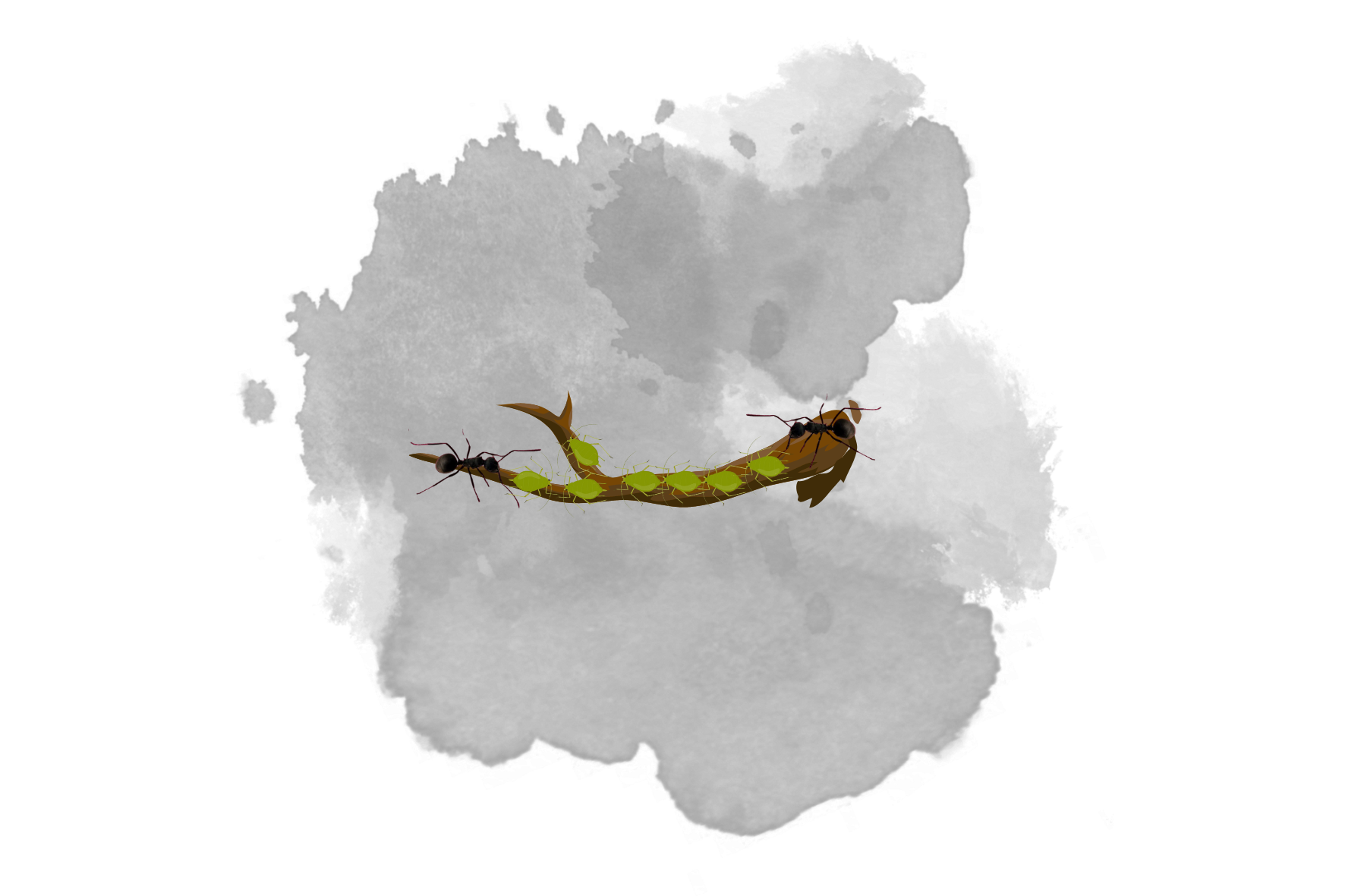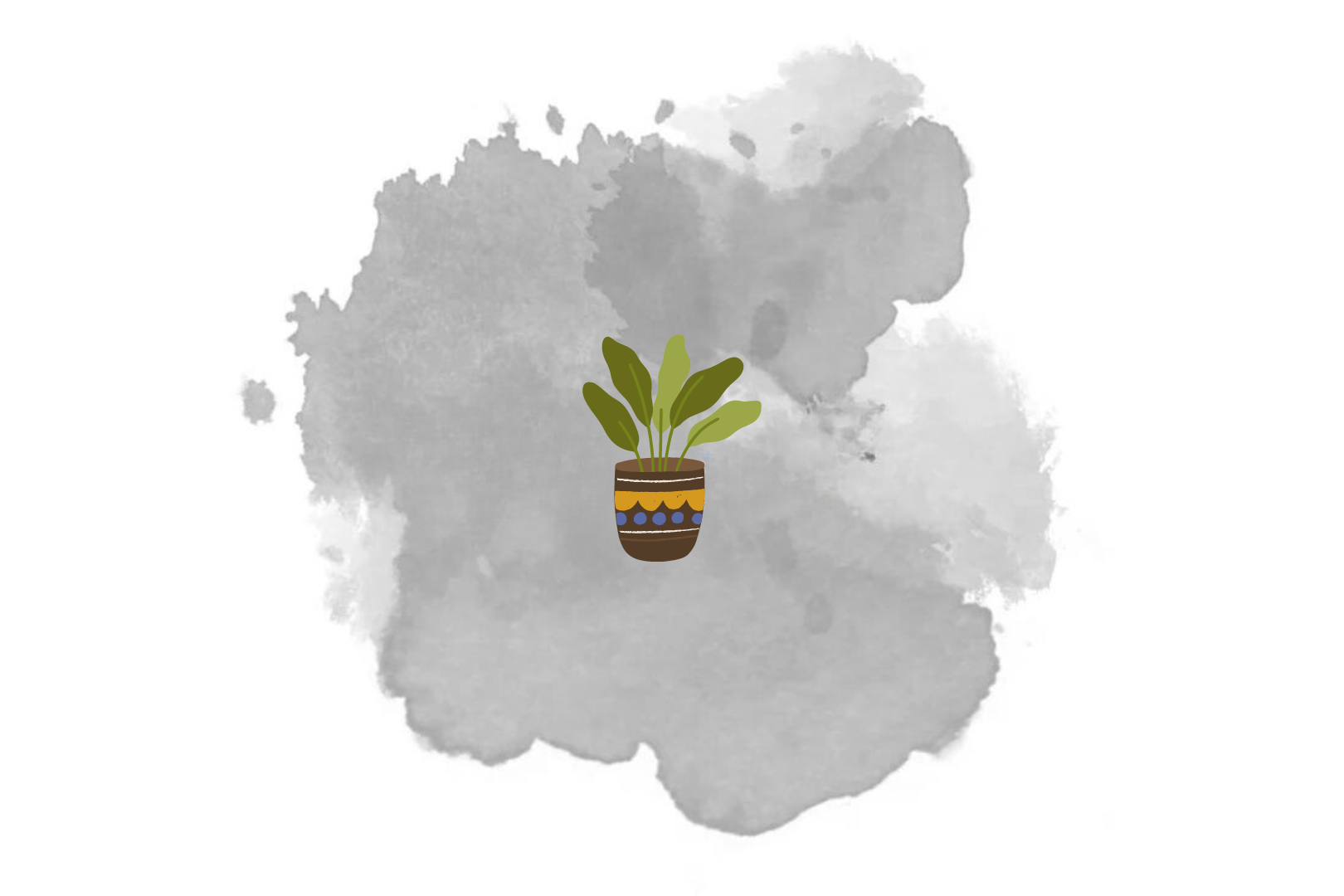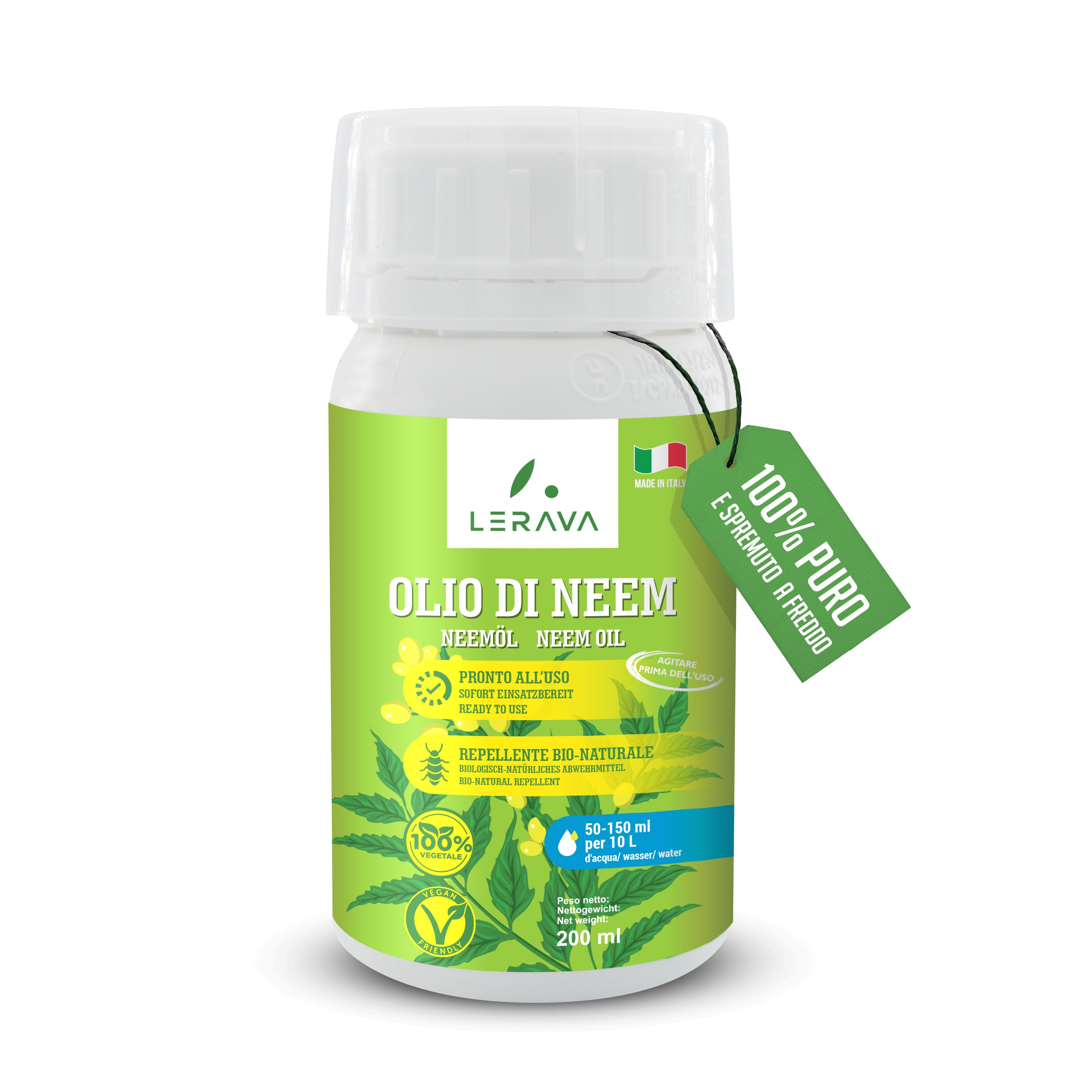Neem oil, extracted from the seeds of the Azadirachta indica tree, is a natural product widely used in agriculture for its insecticidal and antifungal properties. It is primarily obtained through two methods: cold pressing and solvent extraction. Let's see how it works and on which plants it can be used effectively.
What is Neem Oil?
Neem oil is extracted from the mature seeds contained within the fruits, which are drupes similar to cherries, of the Azadirachta indica tree. After harvesting, the neem seeds are sun-dried to reduce moisture content and prepare them for the oil extraction process.
There are two main methods for extracting neem oil:
- Cold Pressing: This method involves mechanically pressing the neem seeds to extract the oil; it is considered the best method because it preserves most of the nutrients and active compounds present in the seeds.
- Solvent Extraction: In this process, the neem seeds are ground and treated with chemical solvents, such as methylene hexachloride, to extract the oil. This method can produce a higher yield.
Once extracted, the oil undergoes a filtration process to remove any impurities and residual solid particles.
How Does Neem Oil Work?
Neem oil works in various ways, making it a versatile product that every good grower learns to appreciate. Let's see specifically what it is used for and how it works:
- Insecticide and Repellent: Neem oil has insecticidal and repellent properties against a wide range of harmful insects, such as aphids, mealybugs, mites, mosquitoes, flies, and other pests. It disrupts the life cycle of these insects by interfering with their endocrine system and altering their growth and development. It can also act as a repellent, discouraging insects from feeding on treated plants; once applied, it penetrates the plant structures and remains active in the vascular system for many days, acting both by contact and ingestion. This makes it a very effective long-term treatment.
- Antifungal: Neem oil also has antifungal properties, making it effective in controlling various fungal diseases of plants, such as white mold, rust, botrytis, and gray mold. It interferes with the germination process of fungal spores, inhibiting mycelial growth and damaging fungal cell membranes.
On Which Plants Can It Be Used?
Neem oil can generally be used on all plants: green plants, flowering plants, shrubs, hedges, and trees; however, some plants are sometimes more sensitive and can show signs of phytotoxicity when treated with high or undiluted concentrations. The solution is to always follow the dosage and application instructions precisely and to test the solution on a small part of the plant for safety.
- Eggplants (Solanum melongena): Eggplants are known to be sensitive to neem oil, especially when young and actively growing. Neem oil can cause leaf and vegetative part burns, compromising the plant's growth and development.
- Cucumbers (Cucumis sativus): Cucumbers can also be sensitive to neem oil, especially when applied in high concentrations or under environmental stress conditions. It can cause leaf burns and negatively affect fruit production.
- Zucchini (Cucurbita pepo): Zucchini are also sensitive to neem oil, especially during active growth phases. It can cause leaf burns and impact the plant's overall health.
- Tomatoes (Solanum lycopersicum): Although tomatoes are not extremely sensitive to neem oil like other plants in the Solanaceae family, they can show signs of phytotoxicity if treated with high concentrations of undiluted oil. Neem oil can cause leaf burns and affect fruit production.
Reasons for Sensitivity:
- Leaf Structure: Some plants have more sensitive and thinner leaves that can be more easily damaged by neem oil.
- Absorption: Some plants can absorb and react to essential oils differently, making them more sensitive to neem oil's effects.
- Concentration: Neem oil is more likely to cause damage if applied in high or undiluted concentrations, especially on sensitive plants.
How to Prepare the Solution?
Neem oil should not be used pure but diluted in water; it is generally recommended to dilute 5 to 15 ml per liter of water. Once the mixture is created, it is transferred to a sprayer to begin treatment.
How to Apply the Treatment?
The solution should be sprayed on leaves, branches, and stems. You can use a sprayer or a spray bottle, but it is important to perform the treatment during the cooler parts of the day, such as early morning or evening, to avoid the sun reducing the effectiveness of the active ingredient.
Being a systemic and natural product, it is recommended to repeat the treatment every 7 to 10 days until the flowering period, stopping at least two days before harvest.
Conclusion
Neem oil is a valuable ally for controlling insects and fungal diseases in agriculture. If used correctly, it can protect plants effectively and naturally. However, it is crucial to follow the recommended doses and always test on a small part of the plant to avoid damage.

![#Taglia_1.7kg [sku-A0291] [lang-IT] [lang-EN]](http://lerava.com/cdn/shop/files/Cessione_IT.png?v=1749635507&width=2000)
![#Taglia_1.7kg [sku-A0291] [lang-IT] [lang-EN]](http://lerava.com/cdn/shop/files/Cessione_IT.png?v=1749635507&width=104)
![[lang-IT] [lang-EN]](http://lerava.com/cdn/shop/products/B09SLG7DHN.MAIN.jpg?v=1674813929&width=104)
![#Taglia_70m² [sku-VV-KMTV-QLBE] [lang-it] [lang-en]](http://lerava.com/cdn/shop/files/Primavera_IT_1.png?v=1749609539&width=104)
![#Taglia_100m² [sku-A0360] [lang-IT] [lang-EN]](http://lerava.com/cdn/shop/files/ESTATE_IT_100m.jpg?v=1751879953&width=104)
![#Taglia_70 m² [sku-A0016] [lang-it] [lang-en]](http://lerava.com/cdn/shop/files/Add_a_heading.png?v=1758461245&width=104)
![[lang-IT] [lang-EN]](http://lerava.com/cdn/shop/files/Solfato_Di_Ferro_IT_1.png?v=1749608449&width=104)
![#Taglia_30m² [sku-AVARACH] [lang-IT] [lang-EN]](http://lerava.com/cdn/shop/files/Champion_IT.png?v=1749608049&width=104)
![#Taglia_30m² [sku-A0265] [lang-IT] [lang-EN]](http://lerava.com/cdn/shop/files/Express_IT_1.png?v=1749619514&width=104)
![#Taglia_10m² [sku-A0148] [lang-IT] [lang-EN]](http://lerava.com/cdn/shop/files/1_10_IT.jpg?v=1727419569&width=104)
![#Taglia_20m² | 200g [sku-A0192] [lang-IT] [lang-En]](http://lerava.com/cdn/shop/files/1_1_193571c2-dc92-488a-b9ac-170592f0b658.jpg?v=1744210602&width=104)
![#Taglia_200g [sku-A0220] [lang-IT] [lang-EN]](http://lerava.com/cdn/shop/files/IT_Semi-Trifoglio200g.jpg?v=1756610388&width=104)






